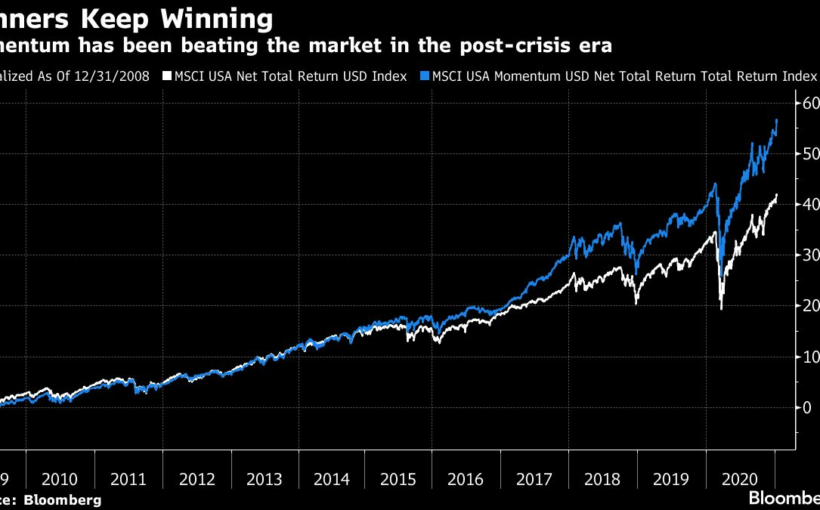Momentum-chasing investors are set to boost Wall Street’s risk-on stock rotation as they bet on systematic trades tied to the American consumer and against defensives like health care.
Asreflation fever boosts strategies that gain in economic expansions, money managers look poised to rebalance trend-following strategies in favor of the rising stars — such as cyclical companies — while shorting the biggest losers.
Think more Chipotle Mexican Grill Inc., less Microsoft Corp.
The style is built for a one-year horizon, which means any changes are gradual and tech remains a heavy favorite. But should the rotation gain more steam, momentum portfolios will fuel the risk-on market shift.
According to an analysis by Evercore ISI, momentum’s exposure to consumer discretionary stocks has surged to 37% this month, compared with just 22% in October. The weighting of health care, the haven of last year’s Covid-lashed market, dropped to 4% from 17%.
Vaccine progress and expectations for economic stimulus are dimming the appeal of the growth factor, which bets on stocks with strong profit expansion like Big Tech.
“The momentum factor has started to diverge relative to growth,” Evercore strategists led by Dennis DeBusschere wrote in a note. “That has to do with the changing face of momentum. It is much moreTesla- or cyclically driven now.”
Herd behavior has defined post-crisis markets. Powered by blue-chip companies, momentum’s famed outperformance since 2009 — some 144 percentage points over the broader market — has spurred inflows from investors of all stripes, from quant and discretionary to retail.
Now, the strategy is set to give another boost to the ever-fashionable reflation trade. Expectations that the incoming administration will have the legislative firepower tostimulate anew the U.S. economy are firing up riskier investing styles, especially after Democratic wins in Georgia last week.
Among factor investors with an estimated $2 trillion overall, those that use the momentum factor rebalance their portfolios periodically to bid up the latest winners, with some also adding shorts on the biggest losers. While each quant’s factor definitions and rebalancing schedule differ, most look at the past year’s returns excluding the most recent month.
By that logic, a simple calculation shows a momentum portfolio tied to the Russell 1000 would hold significantly less tech and health care and more basic materials compared to just one month ago.
While momentum notched a 4% gain last week, the growth factor — which buys companies with the strongest profit expansion — dropped 1%, Evercore noted.
That’s a tell-tale sign that trend-chasing buyers are less likely to go all-in on growth stocks in 2021 with the same kind of zeal as last year when tech stocks soared in the stay-at-home boom.
Source: Read Full Article
